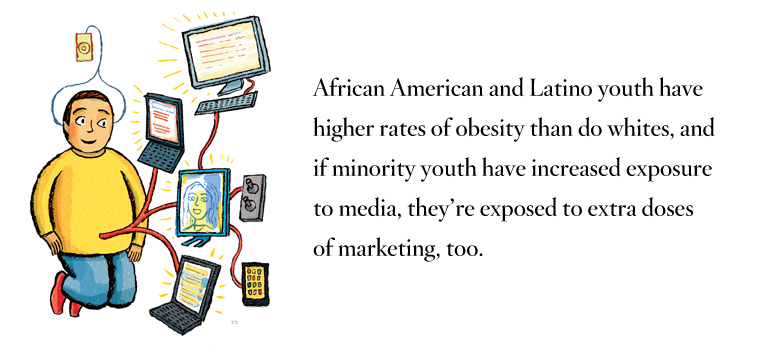
Tethered to Technology
With TV, tablets, laptops and smartphones — not to mention books and magazines — it’s a world of ubiquitous content, especially for minority young people. Northwestern professor Ellen Wartella wants to press the “pause” button.
Wartella and her colleagues reviewed data from two Kaiser Family Foundation reports and found that minority youth consume an average of 13 hours of media content a day — 4 1/2 hours more than their white counterparts, a gap that has doubled in the past decade.
“It was quite clear that these data did bring people up short,” says Wartella, who directed the study and heads Northwestern’s new Center on Media and Human Development. She presented the study, one of the first nationally to focus exclusively on children’s media use by race, at the Lambert Family Communication Conference in Washington, D.C., in June. “We had a pretty diverse set of commentators at the conference, and there was overall acknowledgement that this should be a wake-up call.”
The report finds that minority children (African American, Asian and Latino youth, ages 8 to 18) spend one to two additional hours each day watching TV, approximately an hour more listening to music, up to an hour and a half more on computers, and 30 to 40 minutes more playing video games than their white counterparts. The only medium for which no difference was found between minority and white youth was reading print for pleasure. Young people in all groups read for pleasure approximately 30 to 40 minutes a day.
The race-related differences remain strong even when controlling for parent education and whether children come from one- or two-parent families. The study does not blame parents or offer reasons for the consumption disparities but rather asks what these differences mean for children’s health and education.
The real hot-button issue, according to Wartella, is childhood obesity. It’s not a sedentary lifestyle but marketing that is the main concern.
“There’s pretty good evidence that no amount of exercise can allow us as a society to burn off the excess calories that we’re consuming,” says Wartella, who is on two childhood obesity committees at the Institute of Medicine. “My bigger concern about media is exposing kids to all this food marketing, which is not for healthy foods.”
African American and Latino youth have higher rates of obesity than do whites, and if minority youth have increased exposure to media, they’re exposed to extra doses of marketing, too.
“You also have to think about the context in which many of the children live,” says Lambert Conference participant Sonya Grier (WCAS87, KSM91, 96), who has studied the effects of food marketing since the early 2000s. “The people around them are more likely to be obese and more likely to watch more media. ... You can’t take kids out of their context.”
An associate professor of marketing at American University, Grier is currently working on a grant to explore the development of a strategic and creative counter-marketing campaign.
Grier, who worked on a 1999 Federal Trade Commission project to explore the marketing of violent movies, music and video games after the Columbine shootings, says that with higher rates of media consumption, increased exposure to violence is also troubling.
There is also concern about sexuality, Wartella says, particularly with teen programs on cable where characters engage in explicit discussions about sex and sexuality.
“Excessive media has lots of potential negative implications, and until now it has not been picked up on in these divergent contexts,” says Grier.
Wartella’s next project is to look at parenting in the age of technology, likely the focus of the center’s next policy conference in 2013. Her research will include oversamples of different ethnic communities. “I want to see if there are differences in parenting patterns and what the expectations are from parents,” she says. “I don’t even know if parents of Hispanic youth or African American youth find these data problematic.”
E. Patrick Johnson, professor and chair of performance studies and professor of African American studies at Northwestern and a Lambert Conference participant, called the racial disparity in media usage “astonishing.” However, he cautions against overreacting to the data. “There’s a thin line between being alarmed at the amount of media that these kids are exposed to and saying social media is bad, because there’s a way in which giving kids exposure to this technology can prepare them for the future.”



 Facebook
Facebook Twitter
Twitter Email
Email


